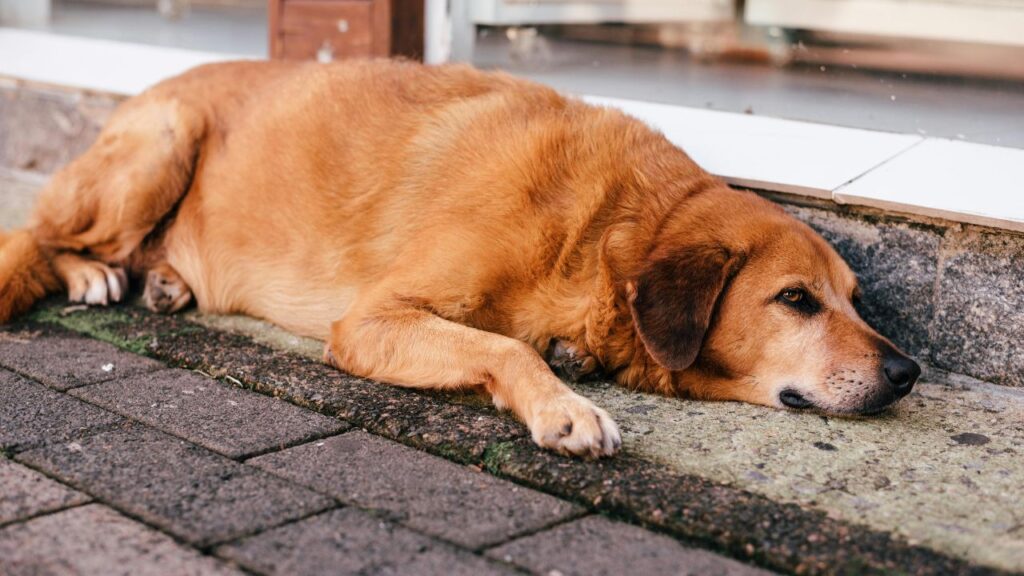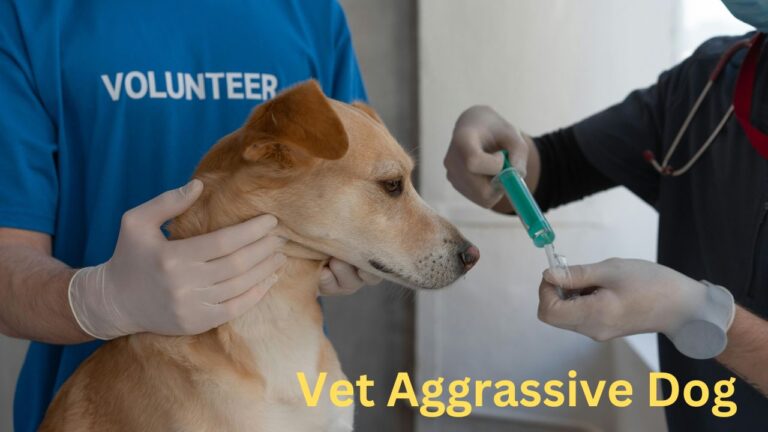Benefits of Waiting to Spay Your Dog for Healthier Growth: A Comprehensive Guide
Spaying, a surgical procedure to remove a female dog’s reproductive organs, prevents unwanted pregnancies and helps control the pet population. While spaying is generally recommended for health benefits, the decision on when to spay is complex and varies by breed, size, and health. The timing can influence several aspects of a dog’s health and longevity, making it important for pet owners to consider the pros and cons before proceeding.
Understanding the Dog’s Heat Cycle for Benefits of Waiting to Spay Your Dog
Dogs experience their first heat, or estrus cycle, typically between 6 and 12 months of age, although large breeds might enter their first heat later. The heat cycle can last 2-4 weeks, during which your dog may experience physical and behavioral changes. Understanding the heat cycle helps pet owners make informed decisions on spaying and prepares them for any challenges associated with the process.
Benefits of Spaying After First Heat
Spaying after a dog’s first heat cycle can offer significant health and developmental advantages. Here are some compelling reasons for delaying spaying until after the first heat:
- Lower Risk of Certain Cancers: Allowing a dog to go through one heat cycle can potentially lower the risk of specific cancers, including mammary tumors. Studies indicate that the risk of mammary cancer can decrease when spaying is performed after the first heat.
- Improved Bone and Joint Health: Delayed spaying allows for more natural hormonal development, which contributes to better bone and joint health. This is particularly advantageous in larger breeds prone to orthopedic issues, as early spaying has been linked to higher incidences of joint disorders.
- Balanced Growth: Hormones play a role in a dog’s growth plate development. Spaying after the first heat allows for more balanced growth and can prevent issues related to disproportionate limb growth, which can occur in large breeds if spayed too early.

Why Wait Until After the First Heat to Spay the Dog?
Delaying spaying allows a dog’s body to develop more fully, benefiting her overall health. This decision is particularly relevant for large breeds like Labradors, German Shepherds, and Rottweilers, where early spaying can interfere with natural growth processes. Here’s why waiting may be worth considering:
- Hormonal Development: A dog’s hormones during its first heat cycle contribute to overall health, influencing growth, metabolism, and behavior. Early spaying can prevent full hormonal maturation, potentially leading to health complications later in life.
- Reduced Risk of Incontinence: Some studies indicate a lower risk of urinary incontinence in dogs spayed after their first heat. Hormonal balance seems to play a role in bladder control, making it one reason why veterinarians may suggest waiting.
- Behavioral Maturity: Allowing a dog to reach sexual maturity may positively impact behavior, such as reducing the likelihood of anxiety or aggressive tendencies. This is often more noticeable in larger breeds, where behavioral maturity can be crucial for training.
Pros and Cons of Spaying Before First Heat
While spaying before the first heat has its advantages, it’s essential to weigh these benefits against the potential drawbacks. Here are some pros and cons of spaying before the first heat:
Pros
- Lower Risk of Reproductive Issues: Early spaying is known to nearly eliminate the risk of pyometra, a life-threatening uterine infection, and significantly reduce the risk of mammary tumors.
- Easier Procedure: Younger dogs recover more quickly from spaying, and the surgery is often simpler and safer in puppies.
- Prevention of Unwanted Behavior: Spaying before the first heat can prevent certain behaviors, such as roaming, that are associated with hormonal cycles.
Cons
- Impact on Growth and Bone Health: Spaying before the first heat can affect the closure of growth plates, which may result in an increased risk of orthopedic issues, especially in large breeds.
- Higher Risk of Certain Cancers: Some studies suggest that early spaying may increase the risk of cancers, such as lymphoma and osteosarcoma, particularly in specific breeds.
- Increased Risk of Urinary Incontinence: Spaying early has been associated with a higher likelihood of urinary incontinence, which can be a lifelong issue.
how to get rid of fleas on outdoor cats
Best Age to Spay a Dog
The best age to spay a dog varies depending on breed, size, and individual health factors. Generally, veterinarians recommend waiting until a dog is at least 6 months old. However, this recommendation changes for large breeds, where waiting until 12–18 months may be more beneficial. For smaller breeds, early spaying (6–9 months) is usually safe and aligns with health guidelines, as their bones mature faster than those of larger breeds.
- Small Breeds: 6-9 months of age
- Medium to Large Breeds: 12-18 months, or after the first heat cycle
Differences in Timing for Small and Large Breeds
Small and large breeds have unique developmental timelines, influencing the timing of spaying. For instance:
- Small Breeds: Small breeds, like Chihuahuas and Dachshunds, mature faster than larger breeds, so spaying between 6 and 9 months is often safe. Early spaying also minimizes the chances of accidental pregnancy and heat-related behaviors.
- Large Breeds: Larger breeds, including Labradors and Golden Retrievers, benefit from waiting until 12–18 months due to their slower growth rates and extended bone development period. Spaying large breeds too early can lead to joint problems and hinder skeletal development.
What Happens if You Wait Too Long to Neuter Your Dog?
While delaying neutering offers some benefits, waiting too long can introduce certain risks. Here’s what can happen if spaying or neutering is significantly delayed:
- Increased Risk of Health Issues: Dogs left unspayed are more likely to develop pyometra, a severe uterine infection, and may have a higher risk of mammary tumors and reproductive cancers.
- Behavioral Issues: Dogs not spayed by adulthood may display more intense mating behaviors, which can be problematic in households with multiple pets.
- Difficulty with Surgery and Recovery: Older dogs face a higher risk of complications during surgery, and recovery can be more challenging as their immune systems are less resilient than those of younger dogs.

Reasons Not to Spay Your Dog
For some pet owners, there are strong reasons to consider keeping a dog intact:
- Breeding Purposes: Responsible breeders may choose not to spay their dogs to allow for future litters, ensuring they follow ethical and health standards.
- Personal or Cultural Beliefs: Some owners prefer not to spay due to personal beliefs, cultural practices, or a desire to maintain the natural state of their pet.
- Health Concerns: In cases where a dog has health issues that might complicate surgery, spaying may not be recommended, and alternatives should be discussed with a veterinarian.
Health Benefits of Delaying Spaying
Delaying spaying offers health benefits related to hormonal development and overall physical wellness. Here are some of the primary health benefits associated with waiting until after the first heat cycle to spay:
- Hormonal Protection: Hormones play an important role in a dog’s natural development. Delaying spaying helps to maintain hormonal balance, which can improve metabolism, immunity, and even cognitive function.
- Reduced Risk of Joint Disorders: Spaying too early has been linked to joint and ligament problems, especially in large breeds. This is because hormones like estrogen affect the closure of growth plates. Delaying spaying allows these growth plates to close naturally, reducing the likelihood of joint disorders and enhancing physical stability.
- Lower Risk of Cancer: Studies have shown that spaying after the first heat can reduce the risk of certain cancers. Mammary cancer, in particular, is less likely to develop in dogs that have undergone one heat cycle before being spayed, although the risk reduction isn’t as significant as with early spaying. This makes the timing of spaying a critical factor in long-term cancer prevention.

Hormonal Development and Behavior Implications
Hormones significantly affect a dog’s development and behavior. Delaying spaying allows a dog to reach full hormonal maturity, which can influence her temperament and training capabilities. Here’s how hormonal development impacts behavior:
- Reduced Anxiety and Fearfulness: Some studies suggest that dogs spayed before the first heat may display more anxiety and fear-based behavior. Hormonal development can help dogs become more emotionally stable, making them better companions and easier to train.
- Increased Trainability: Behaviorists often observe that dogs spayed after one heat cycle tend to exhibit greater focus and impulse control, which can be beneficial for training, especially in high-energy or working breeds.
- Less Aggressive Tendencies: Delayed spaying can sometimes lead to a decrease in aggressive behavior toward other animals, as it allows a dog’s natural instincts to settle during the developmental stages.
Effects of Early Spaying on Growth in Large Breeds
Large breeds like Great Danes, Rottweilers, and Mastiffs are prone to orthopedic issues due to their size and growth rates. Spaying too early can exacerbate these risks, so here’s why timing matters:
- Bone Development: Large breeds experience extended periods of bone growth, and spaying before 12 months can interfere with natural development. This interference can cause leg bones to grow disproportionately, leading to a higher risk of ACL tears, hip dysplasia, and other joint issues.
- Risk of Obesity and Metabolism Changes: Early spaying can alter a dog’s metabolism, increasing the chances of obesity. Weight management is critical in large breeds to avoid strain on joints and ligaments.
- Long-Term Mobility: Delaying spaying until the dog has reached most of her skeletal maturity can contribute to better mobility and a reduced risk of painful conditions like arthritis. Allowing large breeds to go through one heat cycle before spaying can support a more structurally sound frame.

How Long to Wait to Spay After First Heat
For pet owners who decide to wait until after the first heat cycle, it’s essential to consider the timing carefully to avoid complications. Here’s a guideline on how long to wait to spay after the first heat:
- Recommended Waiting Period: Most veterinarians suggest waiting about 3 to 4 months after the first heat. This allows the dog’s hormone levels to return to baseline, minimizing surgical risks associated with high estrogen levels.
- Health Evaluation: After the first heat, consult with your veterinarian to assess your dog’s overall health and readiness for spaying. Bloodwork and a physical exam can determine if she is in optimal condition for the surgery.
- Avoiding the Next Heat Cycle: Timing is essential to ensure the surgery occurs well before the dog’s next heat cycle, which can occur 6 to 12 months after the first. Scheduling within the 3-4 month period post-heat can also help minimize behavioral and hormonal shifts.
Veterinary Recommendations and Evolving Guidelines
Veterinary science continues to evolve, and guidelines regarding the timing of spaying are shifting. Here’s an overview of current veterinary perspectives on spaying:
- Individualized Approach: Many veterinarians now recommend an individualized approach to spaying, considering the dog’s breed, size, lifestyle, and health history.
- Breed-Specific Recommendations: Veterinarians are becoming more aware of breed-specific needs, especially for large and giant breeds. Breeds prone to orthopedic or behavioral issues may benefit from a delayed spaying approach.
- Monitoring Health Trends: As more studies are conducted, veterinarians monitor trends in disease and longevity in both early- and late-spayed dogs, providing pet owners with updated guidance.

Conclusion
Choosing the right time to spay your dog can be a complex decision, but understanding the benefits of waiting until after the first heat can help pet owners make a more informed choice. Delayed spaying offers potential advantages in growth, health, and behavior, particularly in large breeds that benefit from hormonal development. While early spaying has its benefits, especially in preventing certain reproductive diseases, a customized approach based on your dog’s size, breed, and lifestyle is often the best route. Always consult with your veterinarian to make a decision that will support your dog’s long-term health and happiness.
FAQs
1. What are the benefits of spaying after the first heat?
Spaying after the first heat reduces the risk of some health issues, such as certain cancers and joint problems, and supports balanced hormonal development. This can improve bone health, reduce the risk of incontinence, and lead to more stable behavior.
2. What are the pros and cons of spaying before the first heat?
Spaying before the first heat can reduce the risk of mammary tumors and eliminate the chance of reproductive diseases. However, it can affect bone development, particularly in large breeds, and may increase the risk of urinary incontinence and certain cancers.
3. What is the best age to spay a dog?
The best age varies by breed and size. Small breeds can often be spayed at 6-9 months, while large breeds may benefit from waiting until 12–18 months, ideally after the first heat cycle.
4. What happens if I wait too long to neuter my dog?
Waiting too long can increase the risks of reproductive diseases, such as pyometra, as well as behavioral issues associated with mating instincts. Recovery from surgery may also be more challenging in older dogs.
5. Why do some vets recommend waiting until after the first heat to spay a dog?
Waiting allows for full hormonal and physical development, which can reduce the risk of joint problems, improve bone health, and potentially lower the risk of some cancers. This approach is often recommended for large breeds but may vary based on individual health considerations.



CR蒼天の拳天帰 Ver.319(1:1)
ゼーレ 声優
大当たりの瞬間は、心臓がドキドキします。興奮が何とも言えません。
パチスロビッグドリームinロストアイランド2
https://www.k8o.jp/?ArticleID=926323818.html
お金をかけることに抵抗がある人も、少額から始められるのが魅力です。楽しみ方は多様です。
パチスロ 甲鉄城のカバネリ
[url=https://www.k8-casino.biz/?WatchID=920478818.html]空 声優
[/url]
北斗の拳 ラオウ
紫の花
北斗の拳世紀末救世主伝説
CR北斗の拳5 百裂 Ver.229(2:1)
https://www.xn--k8-9g4a3b4f.space/?GameID=927548818.html
新しい台が出るたびにワクワクします。流行を追うのが楽しいです。
CR絶狼
https://www.k8pachinko.work/?WatchID=921702818.html
演出が単純明快で、ストレスなくプレイできるのが良いです。気軽に楽しめます。
CR牙狼GOLDSTORM翔 Ver.319
https://www.diabetesdirectory.org/?WatchID=926766818.html
定期的に新しい台が出るので、飽きずに楽しめます。ファンにはたまらないですね。